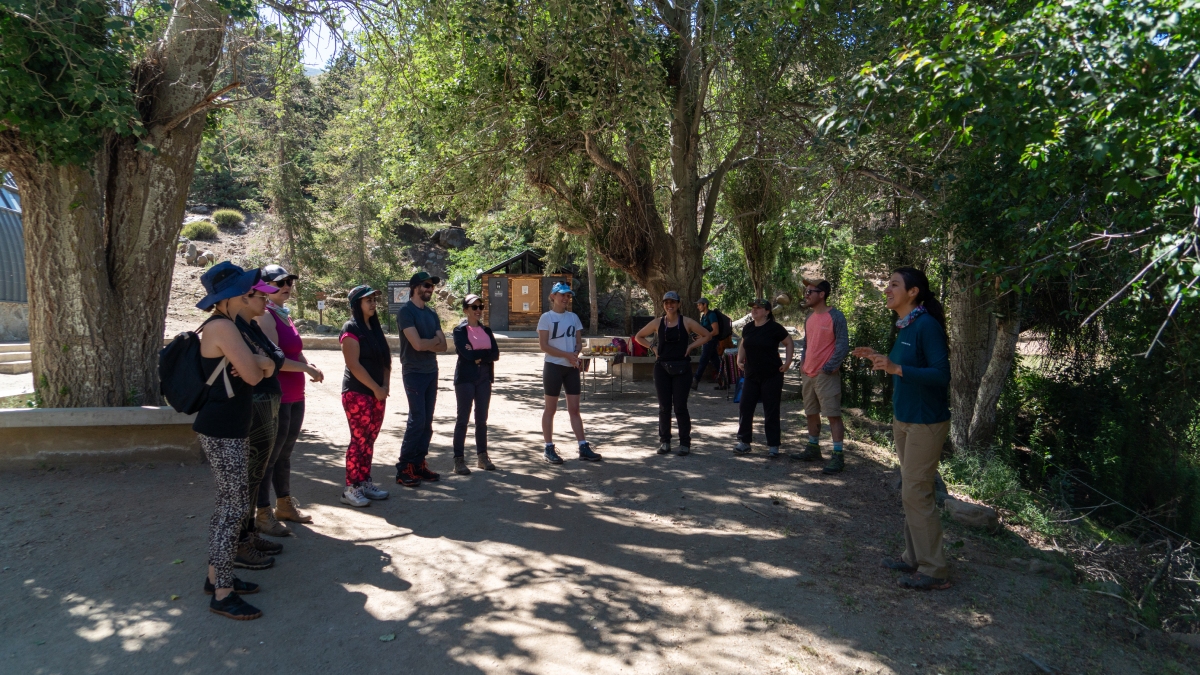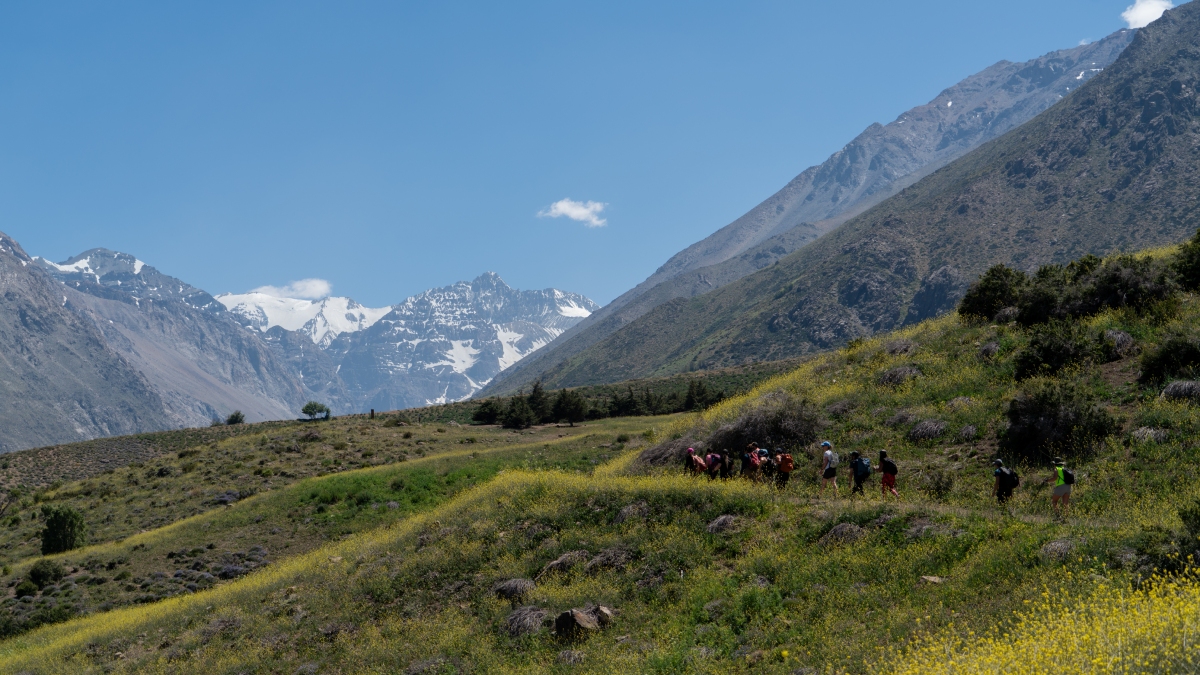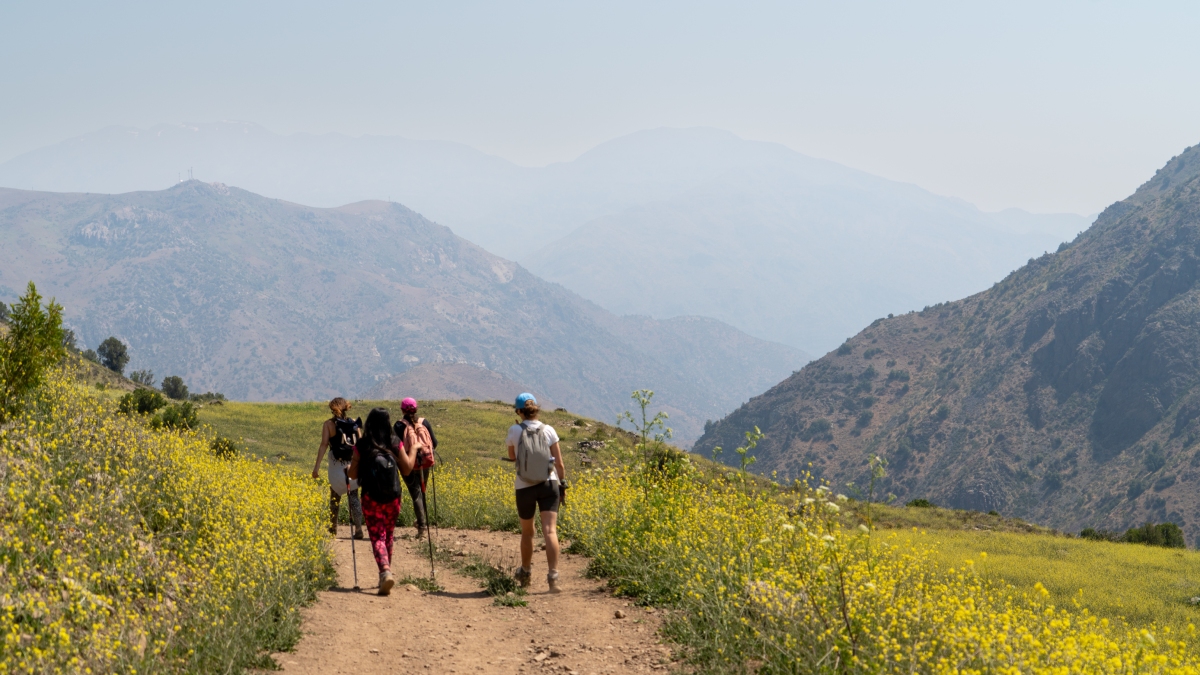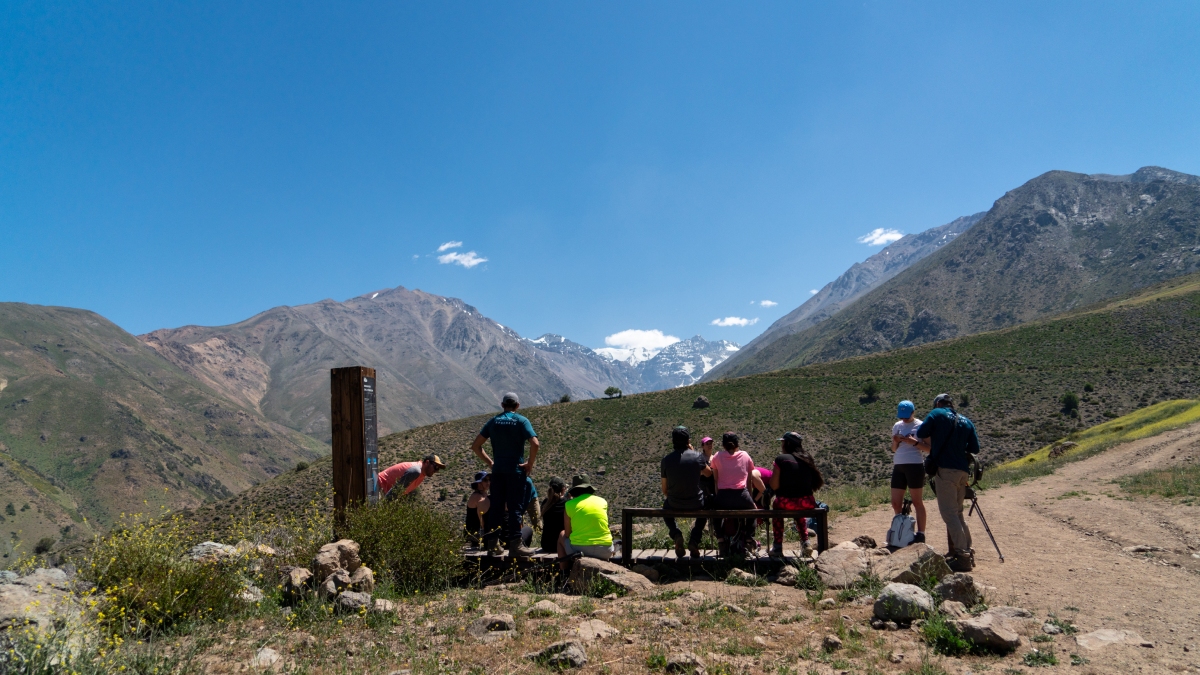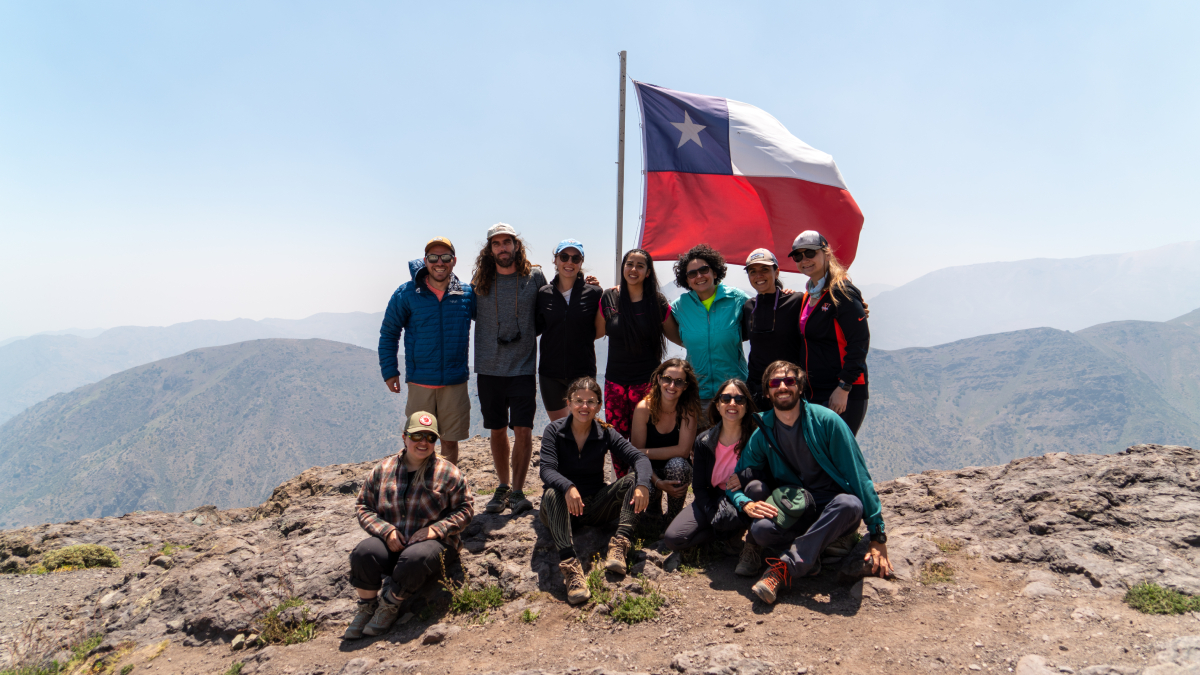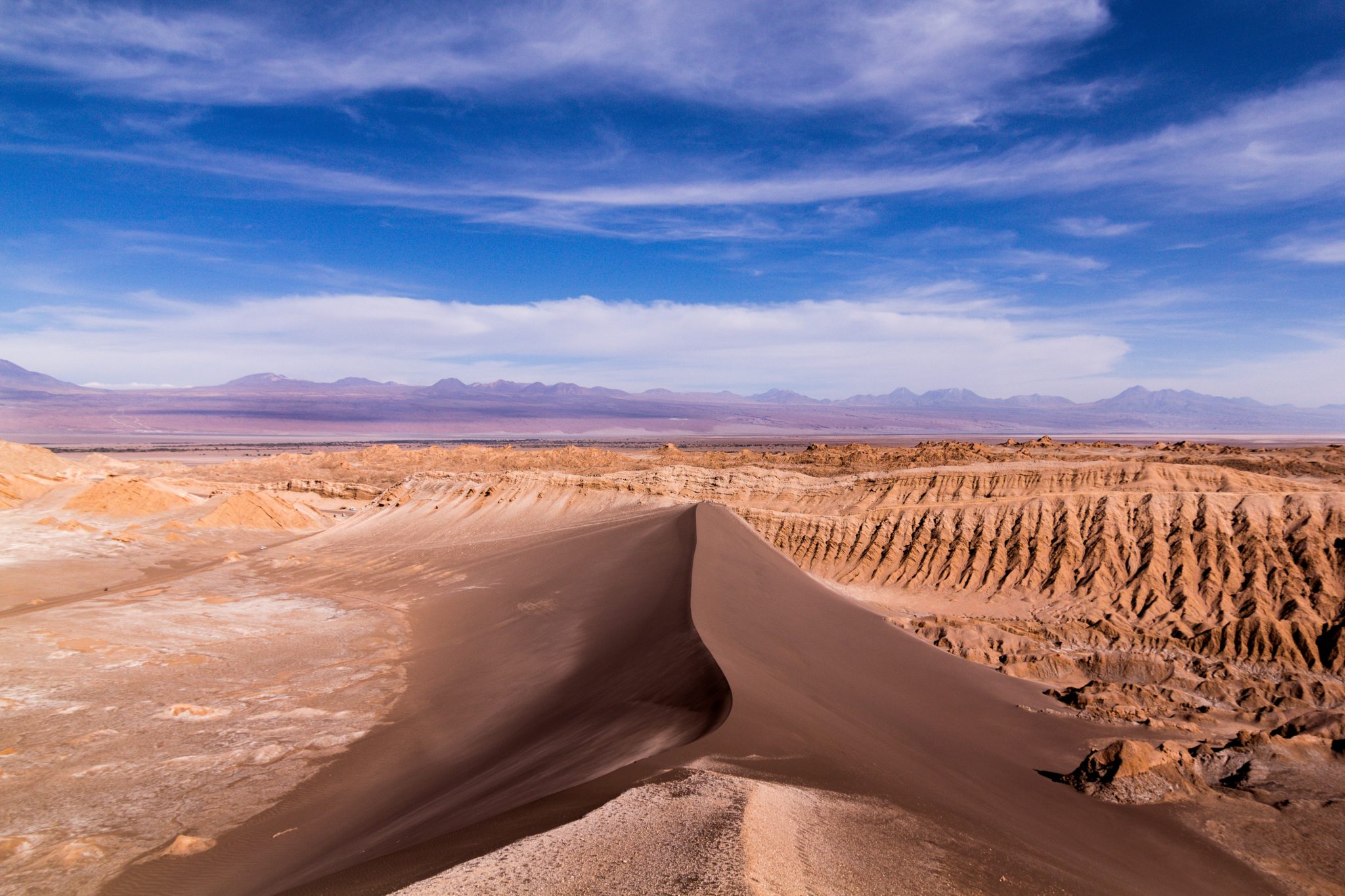Santiago is a sprawling, bustling city. It’s a truly vibrant metropolis that’s home to people of different cultures. Packed full of history and culture, it’s easy to spend a few days exploring the streets and museums of one of the biggest cities in South America.
Outside of the hustle and bustle, lies some of the city’s hidden but magnificent charms. Santiago sits at the base of the Andes, which offer a beautifully contrasting backdrop to the city’s structures. The snow-capped peaks rise over the colonial-style square, the functional markets, and the hyper-modern glass high-rises. Once you’ve finished exploring the busy streets and green parks of the Chilean capital, head out to these mountains for a totally fresh perspective.
To the northeast of the city lies Yerba Loca park. Like a branch stretching out of the hustle and bustle, the road to the park winds through the dry, cactus-lined valley. In the eves of summer, with a bright burning sun, the noise and drama of the capital became only sounds of chirping birds and the occasional cyclist.
With the group, we arrived in the park, registered with the rangers and headed to the base of three possible treks. With well-kept facilities, including a visitor center and restrooms (and some curious but harmless bugs!), the anticipation and excitement to explore the route was bubbling.
Our guides explained that we were going to head to the Refugio Alemán (German Shelter) – a moderately difficult route but one that offers spectacular views of the valley. After a briefing and introductions, we each collected our walking poles and packed lunch and headed on our way.
Starting with a gradual incline and a lot of enthusiasm, after the first bend we could see our end goal – a stone shelter with a proud Chilean flag next to it. From the off, we were surrounded by nature and trying to name what we could identify.
Our guides – geologists by training and outdoor fans – told us more about the different wildlife that we saw along the way, such as the American kestrel, Chilean mockingbird, and red-backed hawk. There was plenty of fauna along the route too, like the Junellia Spathulata plants that scented the path like jasmine. We passed by wild meadows, saw enormous standalone rocks, and climbed amongst the shrub as we worked our way to the shelter.
As we stopped to rest and hydrate, the guides explained to us about the landscape around us.
Our first rest point was at the Mirador del Águila, the Eagle Viewpoint. We didn’t see any eagles from there, but the view of the Paloma Glacier in the distance was incredible! At the second, we learned about the formation of the Andes and the volcanoes and earthquakes that characterize Chile’s geography and even culture.
The nearly three hours of walking flew by and soon enough, we had climbed to the top. What a view! Even with some smokey residue from some nearby forest fires the day before, the vista was breathtaking. This was far from the Santiago we were used to seeing and thoroughly rewarding.
After a delicious lunch and, of course, a photoshoot, we climbed back down to the starting point. We were greeted by a very welcome surprise picnic of nibbles, charcuterie, and some deliciously refreshing juice and pisco sours!
We rested and refueled as the guides showed us some of the most beautiful and fascinating rock samples we’d ever seen. With the loupes provided, we looked at crystals, quartz, fossils, and smooth turquoise stones that looked more like something out of a painting, inspiring a renewed appreciation for the wonders of the natural world.
This hike was a wonderful discovery, as much in its views as its nature. To explore a small bit of the epic Andes that form such an important icon in Chile so close to the city is a magnificent opportunity recommended to any visitor. If you’re looking to see an alternative side to Santiago, or to find some off-beat hiking trails in Chile, be sure to put this one on your list.
Talk to an Ecochile travel specialist today to include this hike in your itinerary.

